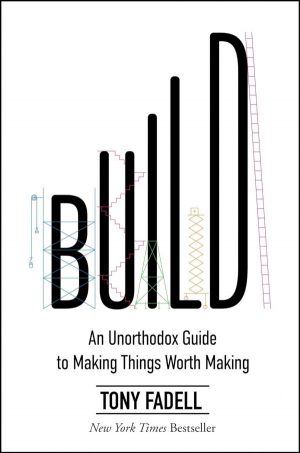My Key Takeaways from Tony Fadell’s “Build”

I will soon be returning to work after my parental leave. It has been an amazing privilege to spend so much time getting to know my son. Over the past month, I’ve had the pleasure of immersing myself in Tony Fadell’s insightful book, “Build: An Unorthodox Guide to Making Things Worth Making”, as a way to prime my mind and get my head back into the product management space. As one of the pivotal minds behind the iPod, Fadell’s perspective on innovation and product development is both unique and enlightening. The book is frank and provocative, offering a plethora of actionable advice for anyone involved in creating and managing products. In this post, I’d like to share just a few of the key takeaways that resonated with me, focusing on the importance of observation, starting with the problem instead of the solution, and the art of building the right team.
- The Importance of Observation: Observation is a cornerstone of innovation. Fadell underscores the significance of being keenly observant of the world around us. It’s about identifying those small, often overlooked annoyances and inconveniences that, once solved, can significantly enhance people’s lives. This process begins with cultivating a mindset of curiosity and empathy, allowing us to see the world through the lens of potential users and empathise with their experiences. By doing so, we can uncover genuine problems that pave the way for impactful solutions. Fadell uses his journey to create the Nest thermostat as an example of this. It started with a pain-point he himself experienced, before he spent many years validating the problem he had experienced, whether it was indeed a general problem worth solving. It was a long-game however, and years passed before the initial observation resulted in Fadell taking the leap to start a company and finally build and release a product. Of course this process can be compressed into a shorter time, but if I remember rightly, Tony was working on bringing us the iPod and the iPhone whilst he was mulling the Nest over.
- Start with the Problem, Not the Solution: In a world brimming with solutions seeking problems, Fadell advocates for a reversed approach. Starting with the problem ensures that we don’t become blindsided by our attachment to a particular solution. This approach involves delving deep into the problem space, understanding the nuances of the issue at hand, and empathising with those who face it. By prioritising the problem, we ensure that our efforts are directed towards creating solutions that are not just innovative but also truly needed. Aside from timing, which is another pre-requisite to successful innovation, this is one of the areas Tony describes as being the downfall of the Magic Link. Magic Link was a handheld computer released in 1994. According to the author, that endeavour was more about packing as many features into the device as possible and showing fellow enthusiasts what they could do, however the market didn’t understand the need or see where this product would fit into their lives.
- Building the Right Team: The journey from a great idea to a successful product is rarely a solo endeavour. Fadell emphasises the importance of assembling a team that’s not just talented but also diverse in thought and expertise. The right team complements each other’s strengths, challenges assumptions, and fosters a culture of collaboration and innovation. It’s about creating an environment where everyone feels empowered to contribute, where risks are taken, and where learning from failures is not just accepted but encouraged. At the same time, a team needs to hold one another accountable as once needs to be able to rely on your team-mates to deliver. Finally on this topic, a big factor is finding others to work with you who care equally much about the success of the product you’re working on, and who will be just as emotionally invested in it.
Tony Fadell’s “Build” goes into a lot of other topics that are more on the individual plane also, such as what to think about when choosing products to work on, time management and networking. This helps it serve as a manual for anyone aspiring to make a meaningful impact through their work. The lessons it imparts are not just about the mechanics of building great products but also about nurturing the right mindset and environment to foster innovation. Whilst these ideas will be familiar to those of you who’ve read similar books on product development from serial Silicon Valley entrepreneurs, the book serves as a reminder that the journey of creating is as much about the product as it is about the people, the process, and the persistent pursuit of solving real problems. Here’s to building solutions that matter, in a world that’s in constant need of innovation!